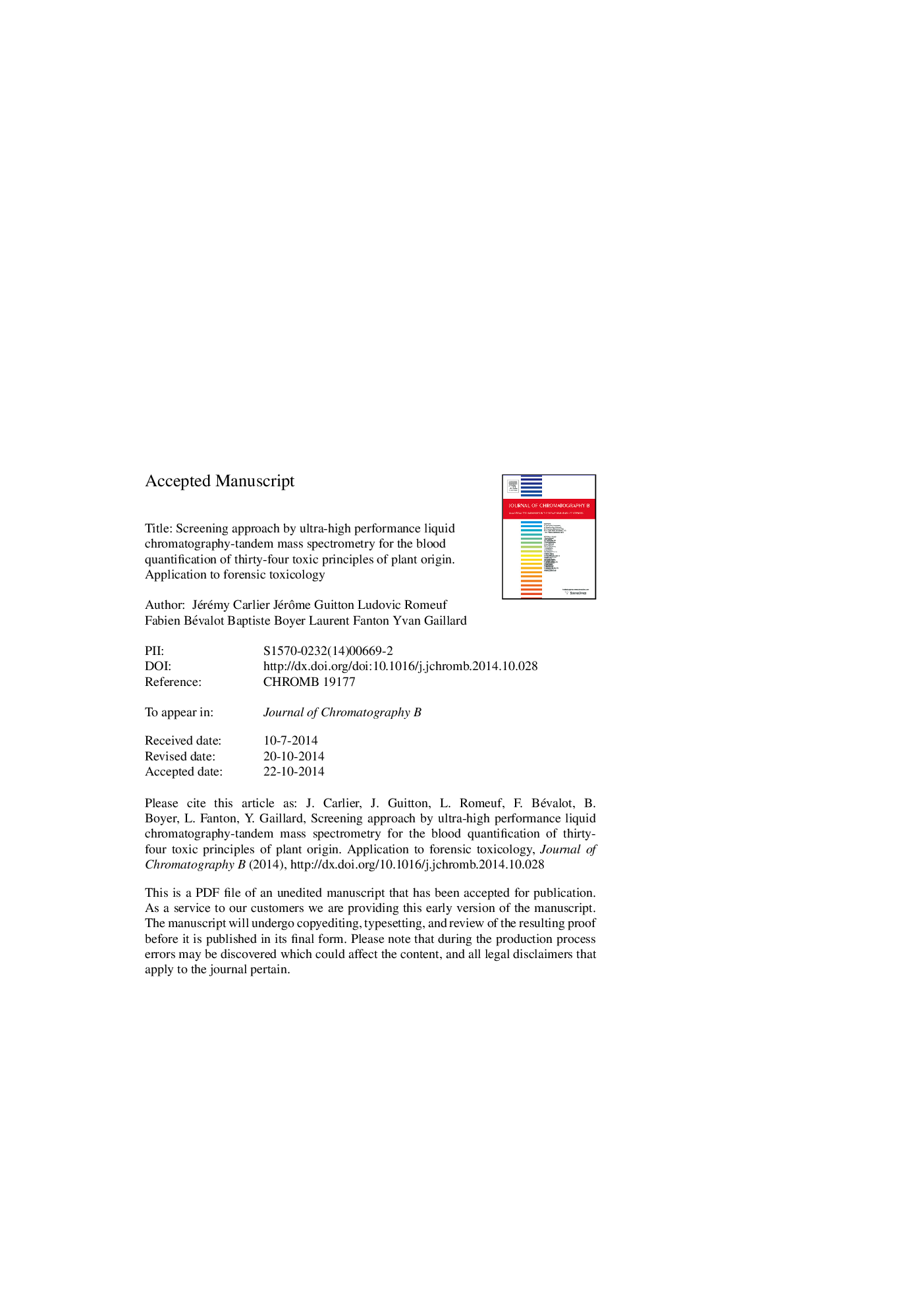| Article ID | Journal | Published Year | Pages | File Type |
|---|---|---|---|---|
| 7617426 | Journal of Chromatography B | 2015 | 25 Pages |
Abstract
Plant poisonings have left their mark on history and still cause many deaths, whether intentional or accidental. The means to show toxicological evidence of such poisonings should be implemented with great care. This article presents a technique for measuring thirty-nine toxic principles of plant origin in the blood, covering a large amount of toxins from local or exotic plants: α-lobeline, α-solanine, aconitine, ajmaline, atropine, brucine, cephalomannine, colchicine, convallatoxin, cymarine, cytisine, digitoxin, digoxin, emetine, gelsemine, ibogaine, jervine, kavain, lanatoside C, lupanine, mitragynine, neriifolin, oleandrin, ouabain, paclitaxel, physostigmine, pilocarpine, podophyllotoxin, proscillaridin A, reserpine, retrorsine, ricinine, scopolamine, senecionine, sparteine, strophanthidin, strychnine, veratridine and yohimbine. Analysis was carried out using an original ultra-high performance liquid chromatography separation coupled with tandem mass spectrometry detection. Extraction was a standard solid phase extraction performed on Oasis® HLB cartridge. Thirty-four of the thirty-nine compounds were put through a validation procedure. The assay was linear in the calibration curve range from 0.5 or 5 μg/L to 1000 μg/L according to the compounds. The method is sensitive (LOD from 0.1 to 1.6 μg/L). The within-day precision of the assay was less than 22.5% at the LLOQ, and the between-day precision was less than 21.5% for 10 μg/L for all the compounds included. The assay accuracy was in the range of 87.4 to 119.8% for the LLOQ. The extraction recovery and matrix effect ranged from 30 to 106% and from â30 to 14%, respectively. It has proven useful and effective in several difficult forensic cases.
Keywords
Related Topics
Physical Sciences and Engineering
Chemistry
Analytical Chemistry
Authors
Jérémy Carlier, Jérôme Guitton, Ludovic Romeuf, Fabien Bévalot, Baptiste Boyer, Laurent Fanton, Yvan Gaillard,
